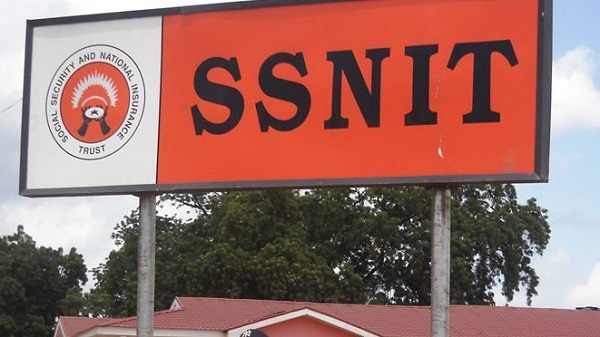The Social Security and National Insurance Trust (SSNIT) is projected to deplete its funds in meeting its financial commitments to beneficiaries in the future.
A recent report by the International Labour Organisation indicates, based on its actuarial valuation, that SSNIT reserves are expected to reach zero by 2036.
Previously, SSNIT functioned as a Provident Fund, offering coverage for accidents, old age, disability, and death, in addition to serving as emigration support.
However, in 1991, it transformed a Social Insurance Pension Scheme governed by the PNDC law 247. Since then, the scheme has consistently provided financial security for retirees.
As of 2020, SNNIT has provided coverage for 1.6 million Ghanaians, representing approximately 16% of the country's workforce.
In recent years, the administrative expenses of managing pension funds have steadily increased as a percentage of member contributions to the scheme.
This trend suggests that a growing portion of resources intended for beneficiaries is being allocated to the operational costs of the scheme.
This raises the important question of how these funds are being utilized if not for their intended purpose.
The report shows that from 2008 to 2020, the average return on total assets was 12.2 per cent. Adjusting for inflation, the real average return on assets is 0.9 per cent.
One notable aspect of investing in Ghana is the 91-Day Treasury Bills (T-Bills), which have provided a higher average return of about 17.5 per cent over the past 12 years compared to the nominal return on assets. In fact, the fund's return has averaged at 70 per cent of the average yield of T-bills.
Actuarial projections made from the report indicate that an increase in contribution rate is necessary for the pension branch to make the scheme more sustainable for future generations.
The valuation further indicates that total expenditures as a percentage of insurable earnings (called the pay-as-you-go (PAYG) rate) rise from 11.5 per cent in 2020 to 29.5 per cent in 2095 on an accrual basis.
The PAYG rate represents the contribution rate that would be required to pay all the expenditures of the scheme (benefits, administrative, and other expenses), year after year, in the absence of a reserve.
According to the valuations in the report, from 2021 to 2031, the PAYG rate will be slightly higher than the current legal contribution rate of 11 per cent, averaging 11.6 per cent.
This will make it challenging to build a larger reserve for future generations, as new funds cannot be added to the system and the government's contribution compliance is low. Starting in 2032, there will be a significant increase in the PAYG rate, primarily due to the rising demographic ratio.
As the number of pensioners receiving benefits continues to grow while the number of contributors does not increase as quickly, this will contribute to the higher PAYG rate.
Further highlights from the actuarial valuation are as follows;
1. Annual contributions, on an accrual basis, are insufficient to pay for all annual expenditures (benefits and administrative expenditures) throughout the projection period.
2. Investment income must be used to pay for annual expenditures. The reserve will grow until 2028.
3. Starting in 2029, total income (contributions, investment income, and other income) is no longer sufficient to pay for annual expenditures. The reserve starts to decrease.
4. During the year 2036, the reserve drops to zero.
5. Starting in 2036, the required annual contribution rate to pay for all expenditures becomes the PAYG rate. As an illustration, this rate is 12.4 per cent in 2036 and 29.5 per cent in 2095.
The reserve ratio is an indicator that reveals the year-end reserve amount versus the annual expenditures for that particular year, and it experiences a significant shift from 3.4 to 0 between 2021 and 2036.
To put it simply, it denotes the duration for which the reserve could cover the annual expenditures in the absence of any contributions, investment income, or other forms of income.
The International Labour Organisation has suggested that the government needs to increase its contributions to the scheme on time to reduce the risk of running out of reserves.
It is recommended that the contribution rate should be raised, and the extent of the increase should be based on specific financing and funding objectives set by SSNIT.
Latest Stories
-
Full text: 2025 Mid-Year Budget Review presented by Finance Minister
2 minutes -
State actors shielding galamsey networks – Minority Caucus alleges
3 minutes -
Gov’t targets completion of 24 stalled projects by end of 2028 – Finance Minister
6 minutes -
2025 Mid-Year Budget Review: This is the Reset President Mahama promised — Ato Forson
6 minutes -
We see you, we hear you and we’re working for you – Ato Forson to Ghanaians
32 minutes -
Ghana deserves better than B- – Finance Minister tells rating agencies
33 minutes -
‘Inshallah, President Mahama will deliver’ – Ato Forson assures Ghanaians
40 minutes -
Ghana’s economic confidence rebuilt in under 200 days – Finance Minister Ato Forson
44 minutes -
Jeffrey Schlupp signs for Norwich City
52 minutes -
NPA boss inspects Aviation fuel discharge at Tema Oil Jetty
1 hour -
We are not out of the woods yet, but second half of 2025 promises to be better – Finance Minister
1 hour -
Gov’t injects GH₵450m into NIB, preserves GH₵6.4bn depositors’ funds – Dr. Forson
1 hour -
Ghana’s fiscal position has significantly improved – Finance Minister
1 hour -
‘The cedi is not a burden, it is our badge of honour’ – Finance Minister rallies nation
1 hour -
We are indeed spending and spending at right places – Ato-Forson
1 hour

